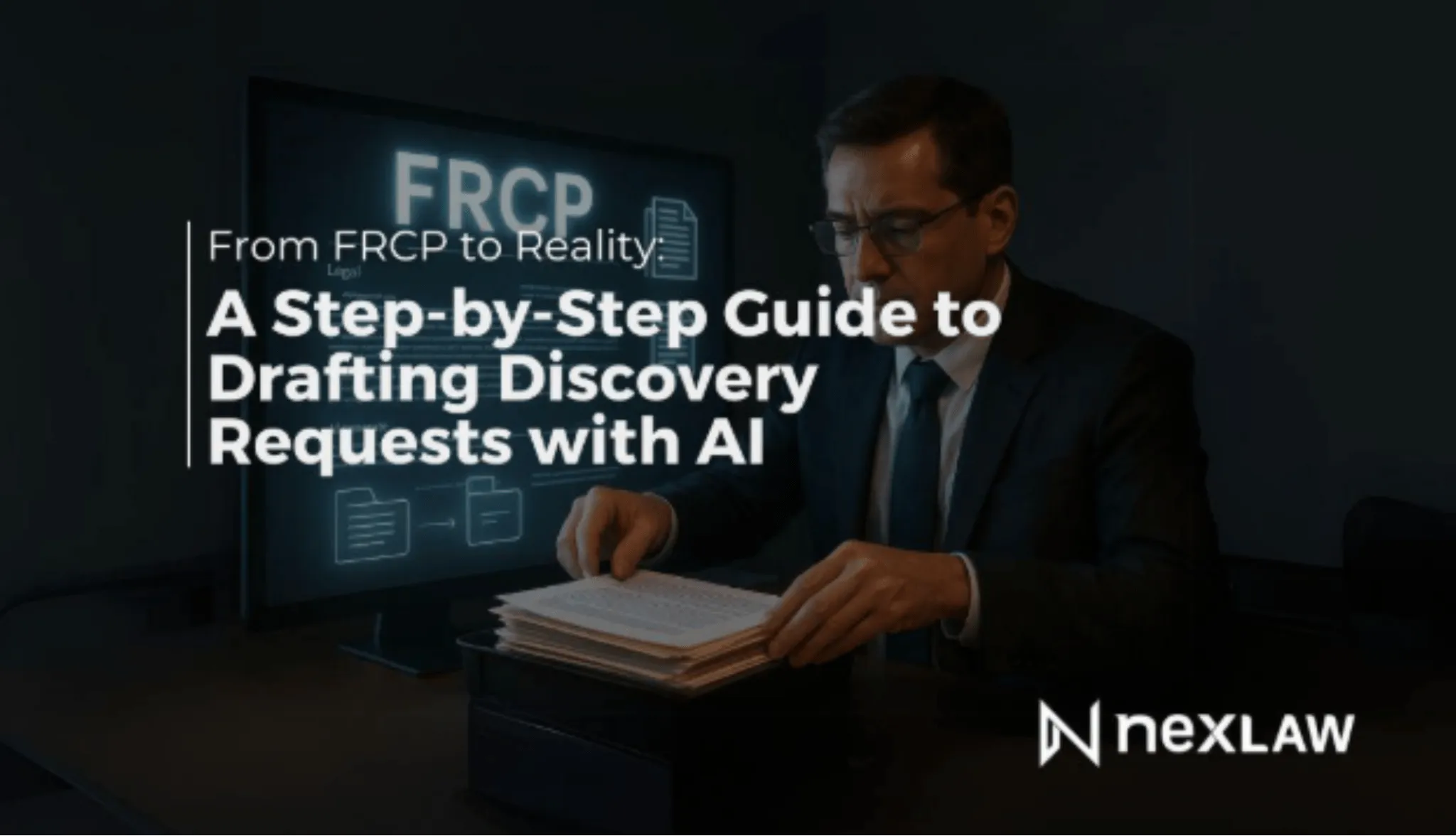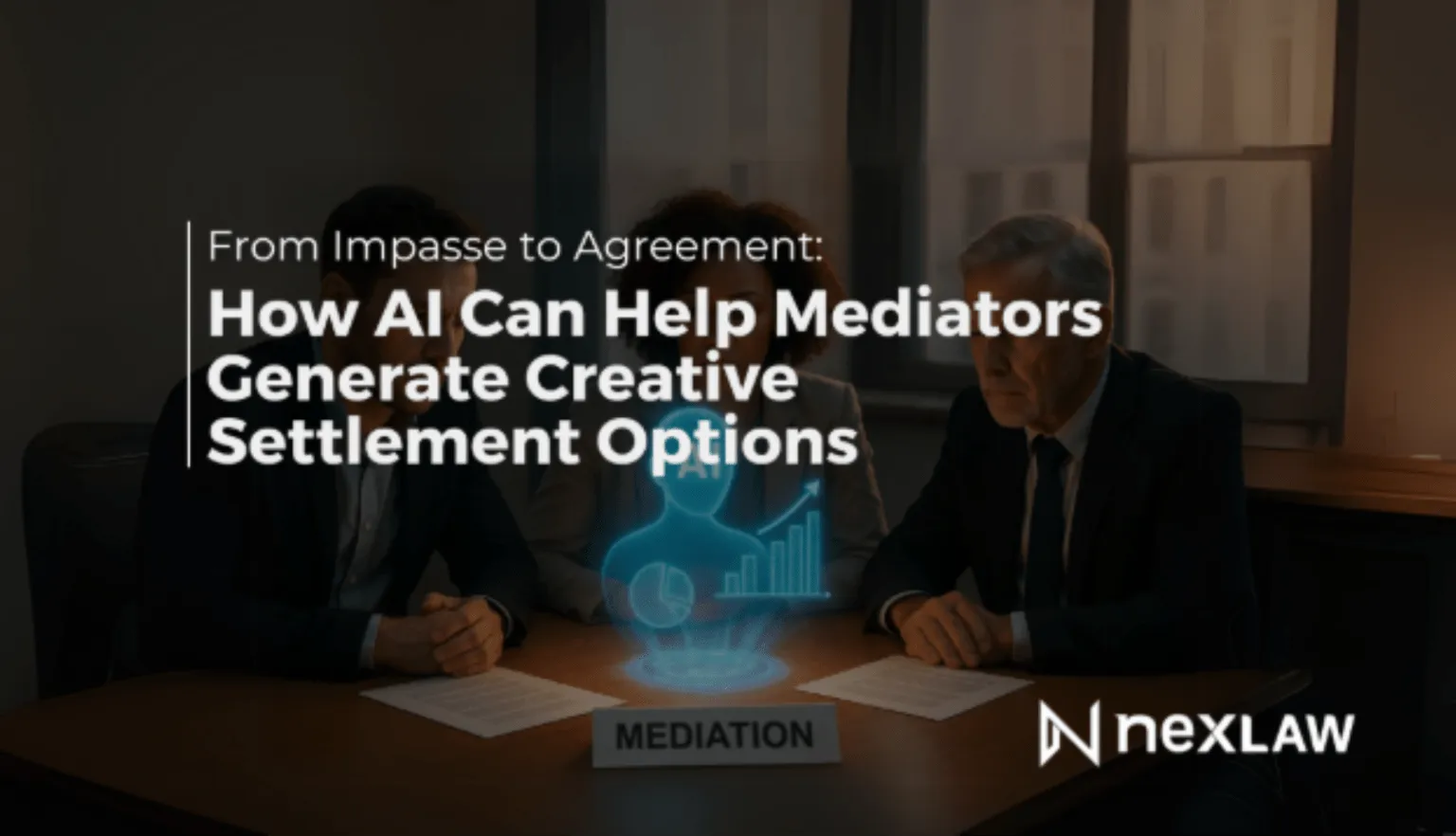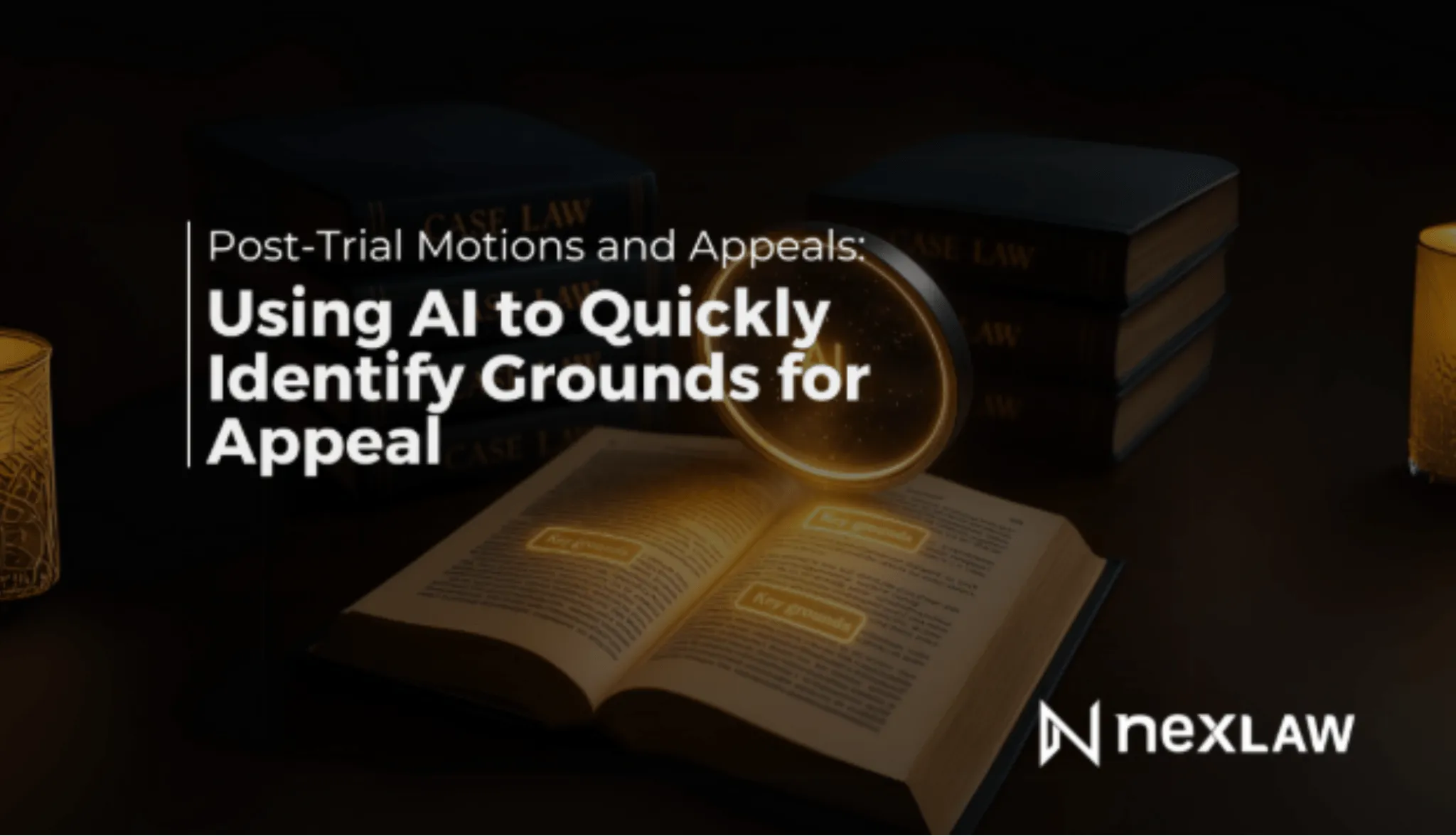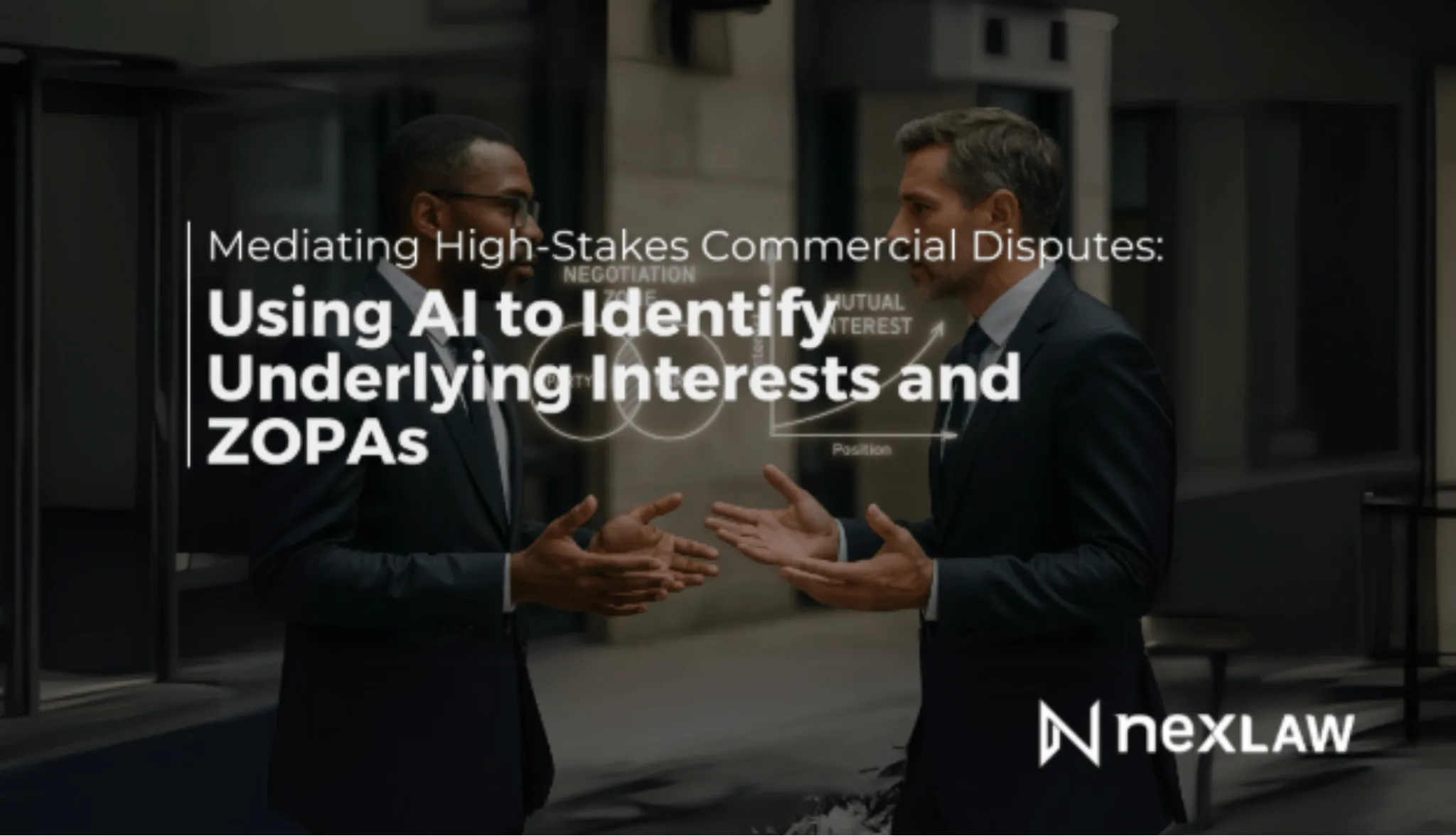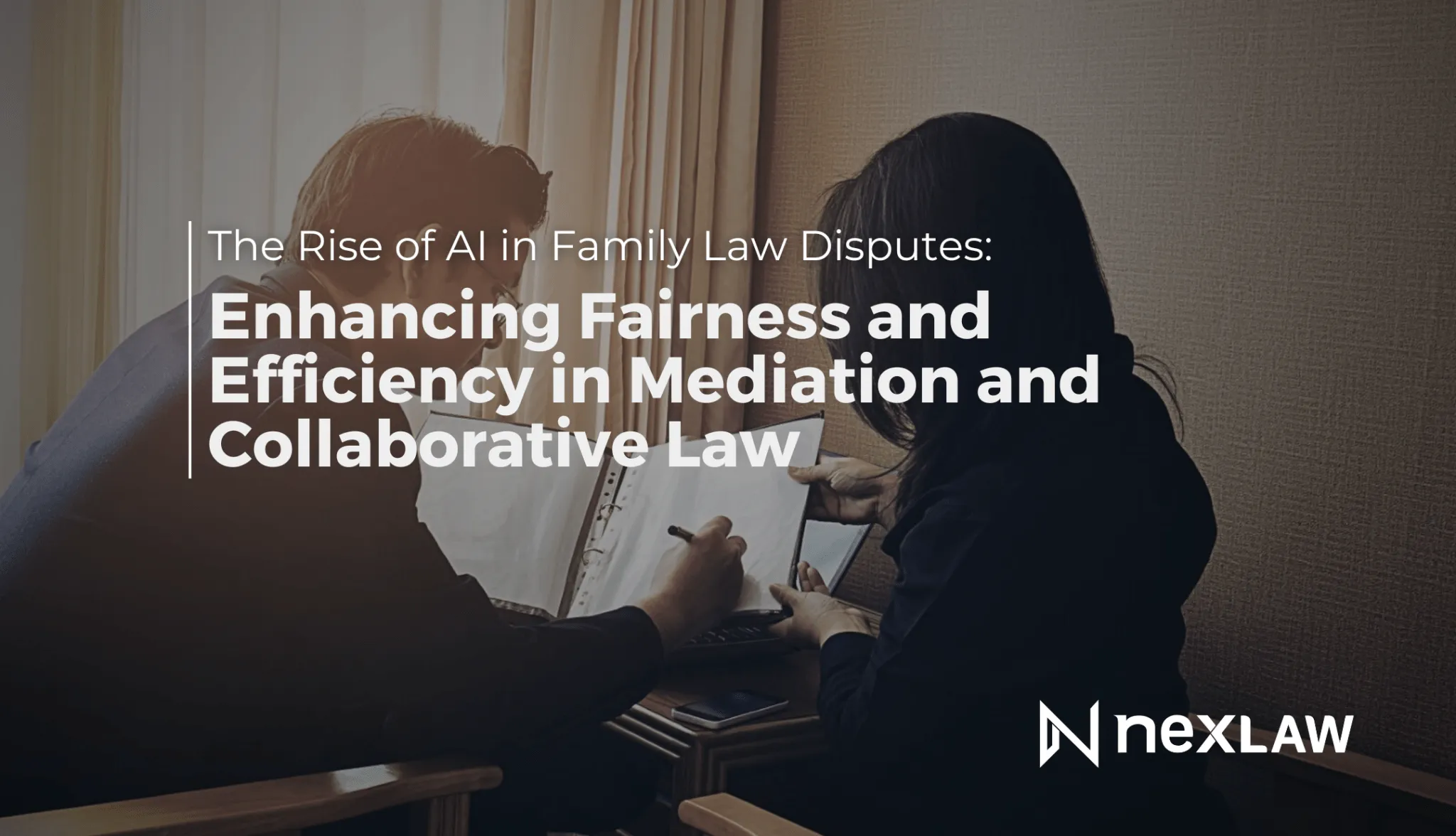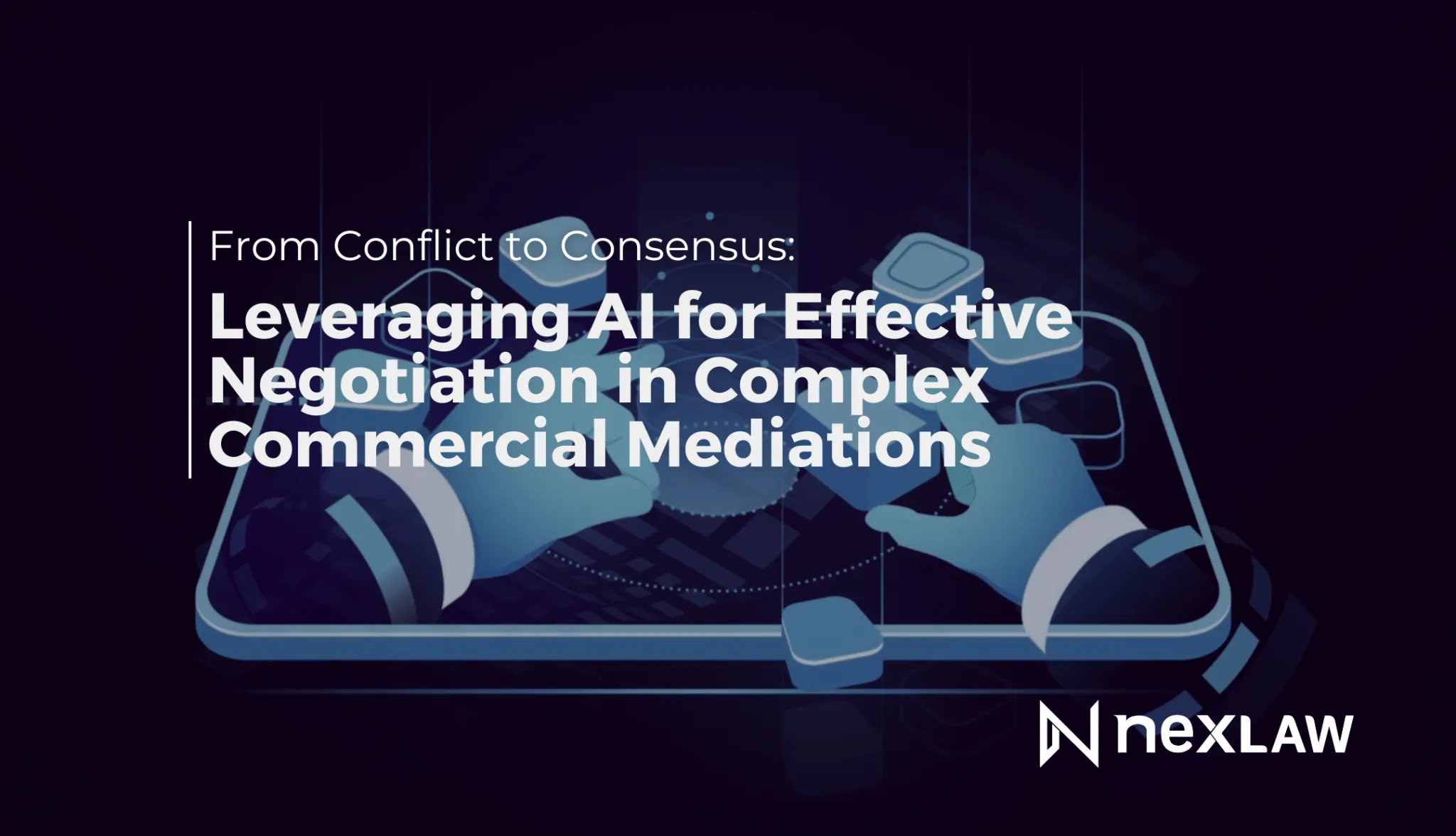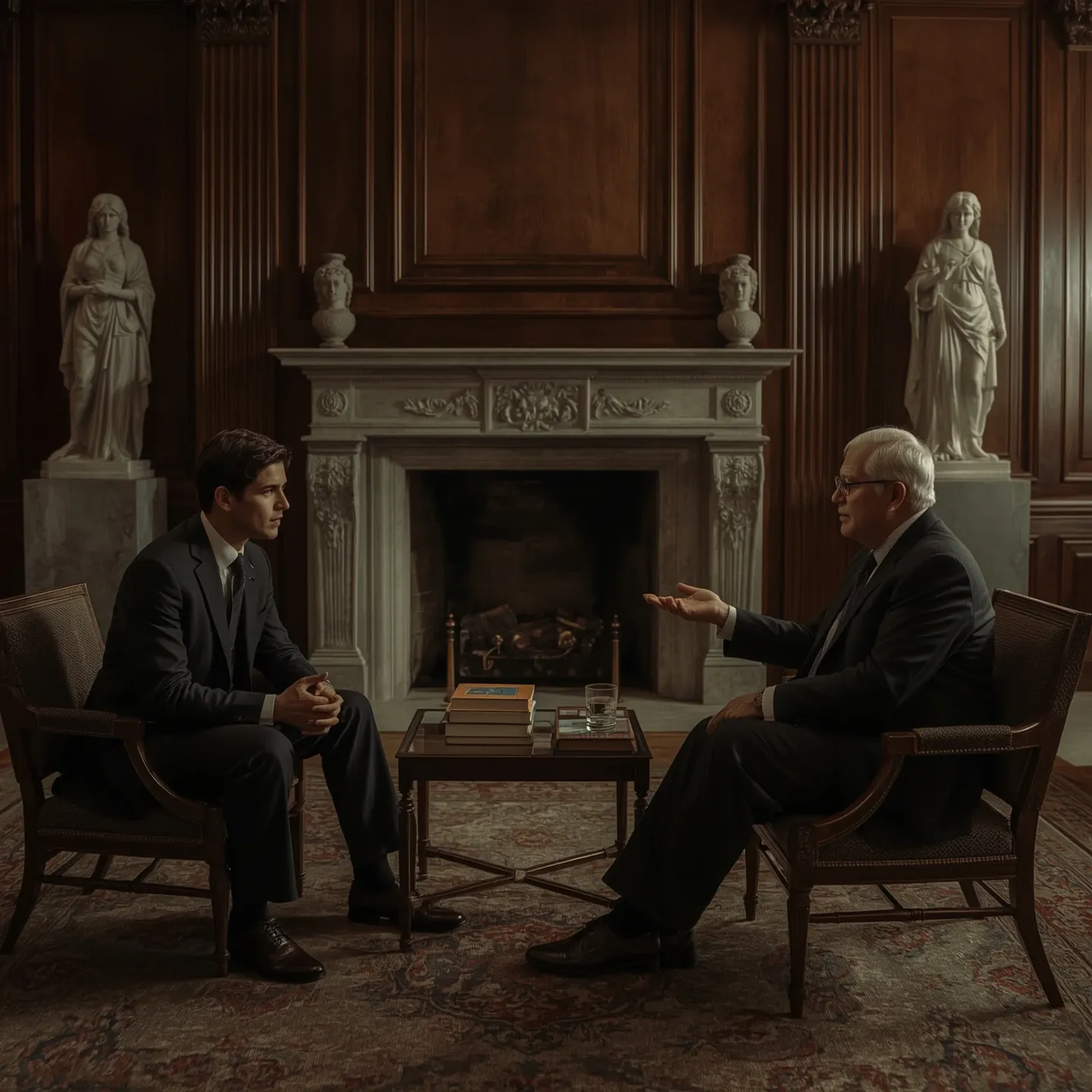From FRCP to Reality: A Step-by-Step Guide to Drafting Discovery Requests with AI
The Federal Rules of Civil Procedure (FRCP) demand that discovery be proportional to the needs of the case, yet the reality for many U.S. litigators is a time-consuming cycle of drafting broad, often boilerplate, requests that lead to protracted disputes and motions to quash. The 2025 Legal Industry Report reveals that solo and small-firm practitioners spend up to 40% of their pre-trial time on discovery-related tasks, a significant drain on resources that could be spent on case strategy. This is where a dedicated Litigation AI assistant transforms the process, moving beyond generic templates to help you draft precise, proportional and powerful discovery requests that are grounded in the facts of your case.
This guide provides a step-by-step workflow for using a AI legal assistants like NexLaw AI to navigate the complexities of the FRCP and streamline your discovery process.
Unlock Legal Insights Instantly
The High Cost of Inefficient Discovery: A 2025 Perspective
Inefficient discovery is more than just a time sink; it’s a strategic liability. In recent years, federal judges have shown increasing impatience with overly broad, “shotgun” discovery requests. A 2025 analysis of federal court dockets showed a 15% increase in motions for protective orders related to disproportional e-discovery requests, with courts frequently citing FRCP 26(b)(1) to limit the scope of discovery. For solo practitioners, the cost of these disputes can be crippling, both in terms of non-billable hours and the risk of judicial sanctions. The traditional method of relying on old templates often fails to address the unique electronically stored information (ESI) present in modern cases, leading to missed evidence and strategic disadvantages.
The AI Advantage: Precision and Proportionality in Discovery
A sophisticated Legal AI Assistant revolutionizes this process by grounding every discovery request in the specific facts and legal theories of your case. Instead of starting with a blank page or an old template, you start with an intelligent analysis of your initial pleadings, motions and evidence. The AI can identify the key disputed issues, the central custodians of information, and the types of ESI likely to be relevant. This allows you to draft interrogatories and Requests for Production (RFPs) that are not only more likely to yield valuable information but are also inherently proportional and defensible, directly addressing the court’s mandate under the FRCP.
A Step-by-Step Workflow with NexLaw AI
Integrating AI into your discovery workflow is a seamless process designed to augment your legal expertise, not replace it.
Step 1: AI-Powered Case Analysis with TrialPrep
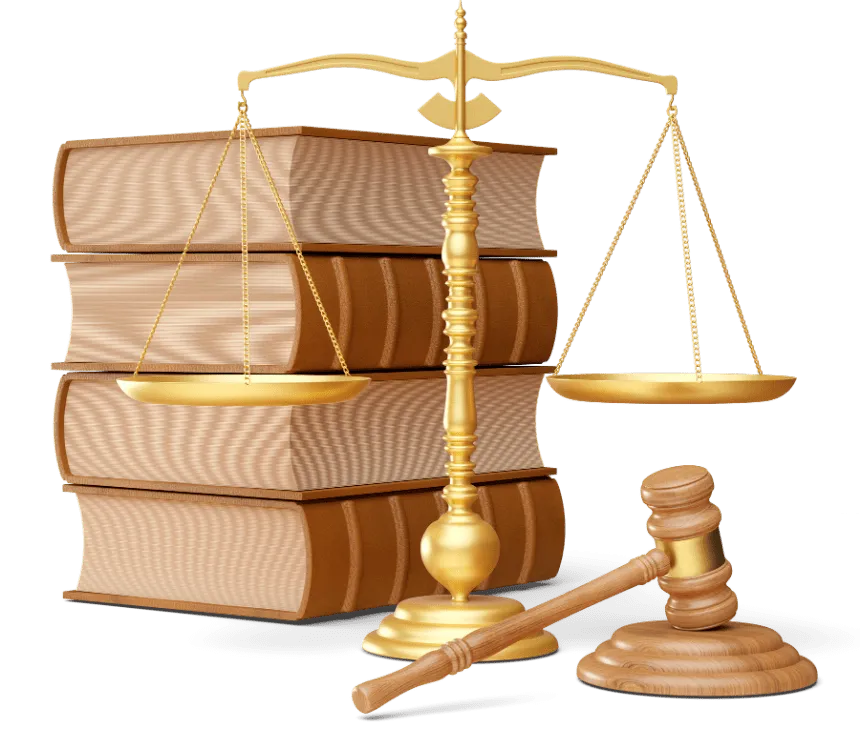
- The process begins by uploading your initial case documents—complaints, answers and initial motions—into NexLaw AI’s TrialPrep.
- The AI analyzes these documents to create a comprehensive map of the core legal claims, affirmative defenses and factual allegations.
- This foundational understanding ensures that every subsequent discovery request is directly tied to a specific element of the case that needs to be proven or rebutted.
Step 2: Identifying Key Custodians and Data Sources

- Based on its analysis of the case file, the AI can help pinpoint the key individuals and data sources most likely to possess relevant information.
- It can identify patterns in communications to suggest who the central custodians are and what types of ESI (e.g., emails, Slack messages, project management data) are likely to be most important, helping you tailor your requests accordingly.
Step 3: Drafting Targeted Interrogatories with NeXa

- Using NeXa, NexLaw’s conversational AI assistant, you can move beyond generic questions. You can ask the AI, “Generate interrogatories for a breach of contract case related to the element of ‘damages’ under New York law.”
- NeXa will then help you draft precise, multi-part questions that are grounded in the specific legal standards of the relevant jurisdiction.
Step 4: Generating Proportional RFPs with the AI Legal Writer

- With the factual and legal framework established, the AI Legal Writer can assist in drafting RFPs that meet the proportionality requirements of FRCP 26(b)(1).
- The AI helps define the scope of the requests, suggesting specific date ranges, search terms, and custodians that are directly relevant to the claims, making the requests far more likely to survive a legal challenge.
Step 5: Review and Refine with Your Expertise

- Throughout the process, you remain in complete control. The AI acts as your highly efficient paralegal and drafting assistant, presenting you with well-structured, evidence-backed drafts.
- You apply your professional judgment to refine the language, adjust the scope and ensure every request aligns with your overarching case strategy.
Case Study: A Construction Defect Dispute
Imagine a solo practitioner representing a subcontractor in a multi-million dollar construction defect case. The general contractor serves a massive discovery request with hundreds of RFPs, many of which are boilerplate and irrelevant. Instead of spending weeks on objections, the lawyer uses NexLaw AI. ChronoVault organizes the project documents and creates a timeline, highlighting that the alleged defects occurred months after their client had left the job site. Using this data, TrialPrep helps draft a targeted motion for a protective order, citing specific evidence and FRCP 26(b)(1). The court grants the motion, significantly narrowing the scope of discovery and saving the client tens of thousands of dollars in e-discovery costs. This process, which would have taken over 40 hours manually, was completed in under five hours.
Why AI-Assisted Drafting is the New Standard?
The ABA Model Rules of Professional Conduct emphasize a lawyer’s duty of technological competence. In an era of complex ESI, using AI to enhance the precision and efficiency of discovery is rapidly becoming a key component of that duty. By leveraging AI, you not only work more efficiently but also produce a higher quality work product that better serves your client’s interests and withstands judicial scrutiny.
Stop drowning in discovery disputes and boilerplate templates. It’s time to harness the power of AI to bring your discovery process into the 21st century.
Ready to feel the difference in your litigation workflow?
Book a Personalized Demo to see how NexLaw AI can transform your discovery process.
Explore Our Plans and discover how a powerful Legal AI Assistant can elevate your practice.
